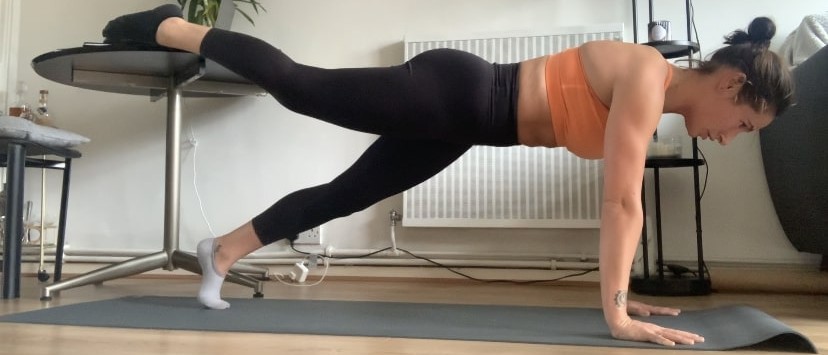Live Science Verdict
The Manduka PROlite yoga mat comes recommended by yoga teachers, offering stability and cushioning for your joints. It requires breaking in and is initially slippery to use, but you have three size options to choose from and plenty of space to practice.
Pros
- +
Easy to clean
- +
Spacious range of sizes
- +
Closed-cell anti-bacterial design
Cons
- -
Slippery, grip towel or gel required
- -
Needs breaking in
Why you can trust Live Science
According to Manduka, The Manduka PROlite yoga mat is the number one mat recommended by teachers worldwide.
Designed with three size options, including regular, long, and long and wide, this super spacious yoga mat can hold the practice of all yogis. The PRO series is the OG of the Manduka range, combining premium recyclable materials with supportive cushioning for joint protection and extra room to spread your wings (or limbs?)
Size: Standard: 71”x 24”/ 180cm x 61cm, Long: 79” x 24”/ 200cm x 61cm, Long and wide: 79” x 30” / 200cm x 76cm
Thickness: 4.7mm
Weight: 4lbs/1.9kg, 4.5lbs/2.1kg, or 5lbs/2.7kg
Materials: Certified STANDARD 100 by OEKO-TEX®️, PVC
Colors: 13 striking block colors to choose from
It’s a brilliant option if you’re looking for a lighter model (weight starts at 1.9kg) and more room on your mat, sending it straight into our round-up of the best yoga mats around. Be warned though, the closed-cell surface prevents moisture absorption, so if you’re practicing hot yoga or just tend to sweat a lot, we strongly recommend investing in a grip towel or gel — or opting for a specialized grip yoga mat from our guide instead.
We put the Manduka PROlite through rigorous testing as both a fitness instructor and a yogi student, assessing the highs and lows of its weight, grip, and cushioning. Find out the many benefits of yoga for your physical and mental health, or read on to see how we got on.
Price and availability
The MSRP of the Manduka PROlite yoga mat is $99-$115/ £69-$120 depending on size, available on the Manduka website. It sits on the (slightly) more affordable end of the scale of our guide.
You can recycle your old mat for $10 with any mat purchase using the Live On scheme, and Manduka also offers add-ons like a yoga mat wash at checkout. This mat is available for international shipping and is also available via third-party websites like Amazon.
Design
We tested the thunder-grey color in a standard size and loved the understated look. The palette ranges from olive ‘celadon green’ to striking pink ‘majesty’, with only a Manduka logo stamp adding to the design.
There aren’t any alignment lines or patterns to speak of on the Manduka PROlite range; this could be off putting for beginners that require a helping hand. The underside of the PROlite yoga mat features a proprietary dotted pattern that holds the mat firmly on the floor, and a textured top layer helps you flow through transitions without the sticky grip of other models, like the tried-and-tested Lululemon Take Form yoga mat.
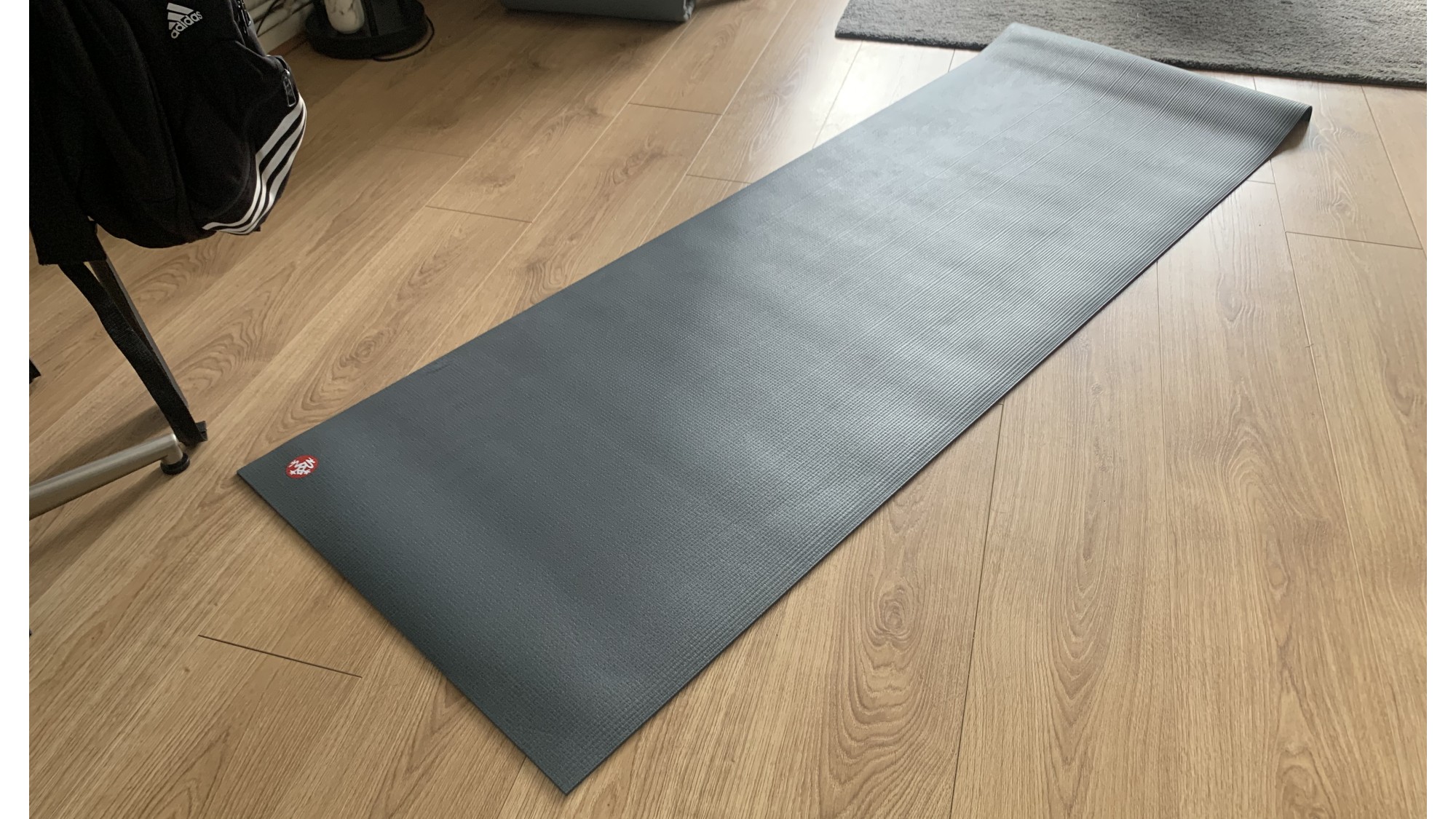
The PRO series yoga mats are all made using PVC (100% latex-free) and emissions-free manufacturing. They’re also OEKO-TEX®️ certified, which means they have tested for toxic chemicals and harmful substances. Each mat is recyclable via the Live On scheme — good news for those trying to up their sustainability efforts.
This yoga mat has a closed-cell surface, which means it’s non-absorbent. The idea is to prevent bacteria from building up to improve the hygiene and longevity of your yoga mat, but because moisture isn’t absorbed, it becomes slippery — quickly.
Manduka recommends pairing your mat with a grip towel or applying grip gel to improve traction, especially during hot yoga practice. They also offer handy tips via their blog, like engaging your core during practice and using a proper mat cleaner post-use.
On the plus side, this design makes for an incredibly easy clean, unlike the super grippy and coarse Jade Harmony yoga mat. But we cover this more below.
Performance
Manduka advises practicing breaking in the PROlite yoga mat as much as possible, clearly stating that the grip improves with use and time.
We can only speak for the limited time we’ve spent testing, but we will update this review in the coming months after more time is spent on the mat. Manduka says the ‘professional medium grip, as preferred by teachers, allows you to flow between postures without sticking to the mat,’ — an issue found with very grippy models.
We found this model slippery throughout testing and wouldn’t practice without a grip towel. For more precarious balances and poses like a wheel, handstand, or downward dog, we wouldn’t feel comfortable relying on the mat grip alone to hold us. There’s only so much core engagement to improve your stability in poses.
When trying to maximize hot yoga benefits in a vinyasa or Bikram class, we strongly recommend having a towel handy to help absorb moisture and improve your grip until you’re further into the breaking-in process. However, Manduka dishes up a nifty salt treatment trick if you’re keen to speed up the process, recommending yogis sprinkle a layer of coarse sea salt over the mat, leave it in the sun for 24 hours, then gently rub away with a damp towel. It does help, although it gets messy in a second-floor apartment with no garden.
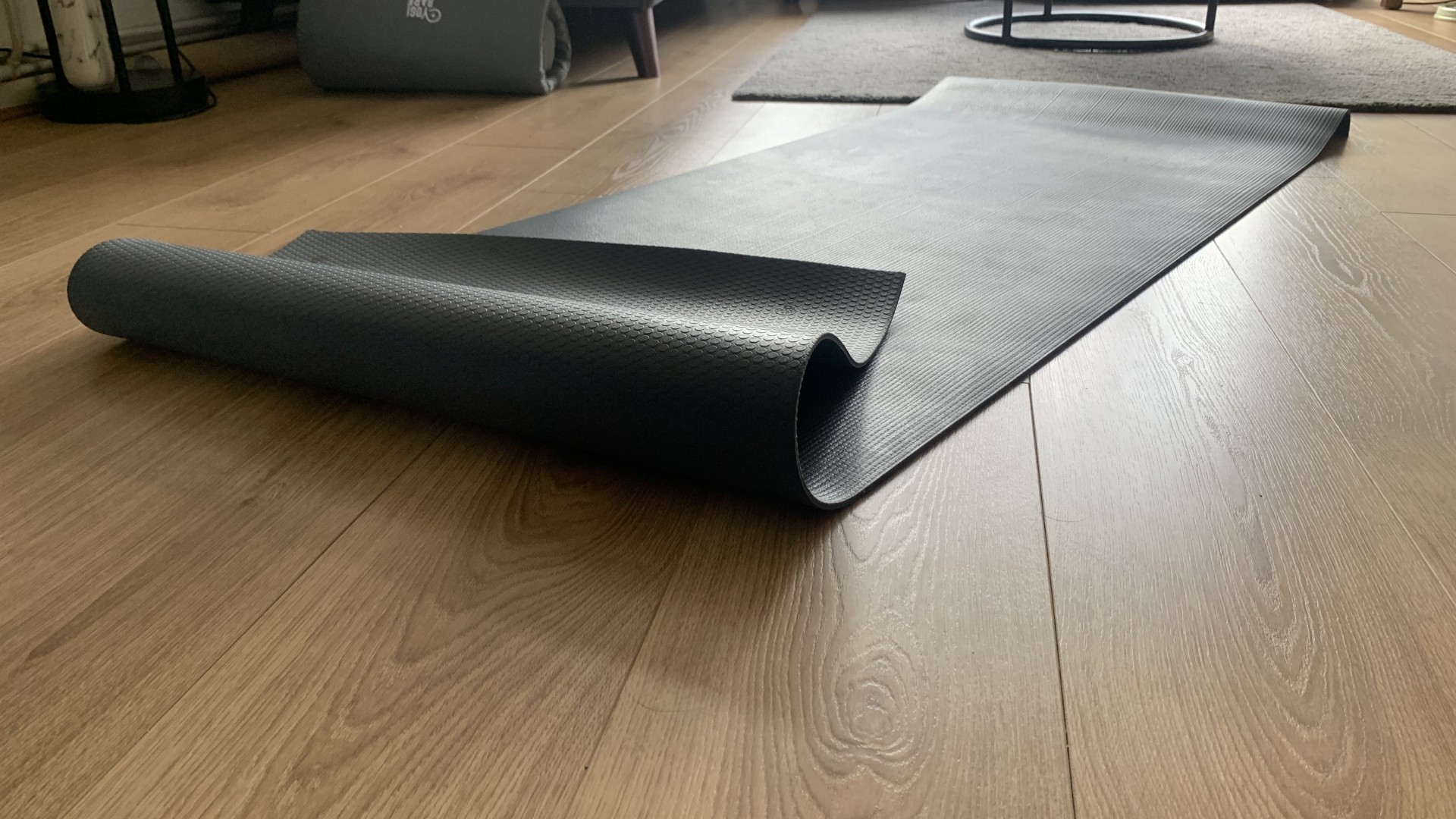
The Manduka PROlite yoga mat uses 4.7mm of high-density cushioning to help improve joint protection whilst still maintaining versatility and stability. We could have done with slightly more cushioning, especially in frog pose (similar to child’s pose, but with knees wider and knees and ankles aligned). The thickness will likely suit teachers and those with advanced practice as it provides much more grounding and stability on the mat. However, beginners or those with a Yin practice might prefer a thicker mat like the Lululemon Reversible 5mm yoga mat.
That aside, we had more than enough room to flow, and it was a joy to freely test our parameters without resorting to planting down on the floor around us. As a 5”2 yogi, I hardly need the space of taller buyers, but the roomier options encourage inclusivity, and it’s an ethos we can get on board with. The extra wide option also allows you to play with alignment, especially if you have a mandala-style practice that requires using all four corners of your yoga mat.
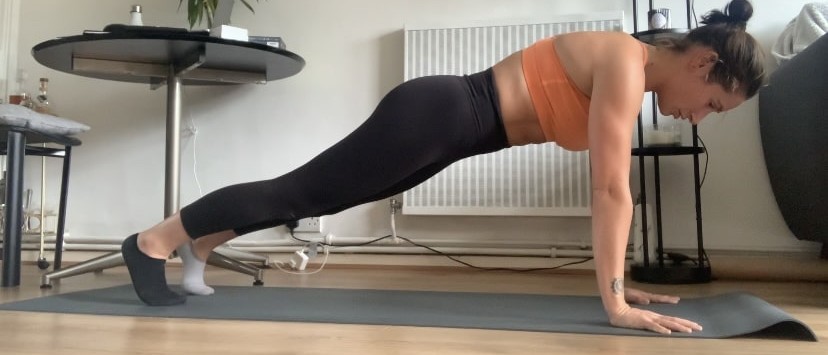
The standard size supports a lightweight design and weighs 1.9kg, so it should suit those on the go. The large option peaks at a hefty 2.7kg, so ensure you check which size you’re buying if you know you’ll be traveling often. Manduka individually make mats and they do warn that size and pattern could differ very slightly from images and specs.
Care
We recommend our handy go-to guide on how to clean a yoga mat.
Manduka PRO mats should be stored top side facing outwards to prevent any curling during your practice. The popular brand recommends breaking in your mat with repeated use to improve the grip and adding a performance yoga towel to initially help you out alongside the salt treatment if you have some outdoor space.
To clean the mat, yoga mat washes and disinfect mat cleaners are both tried and tested methods of preserving materials.
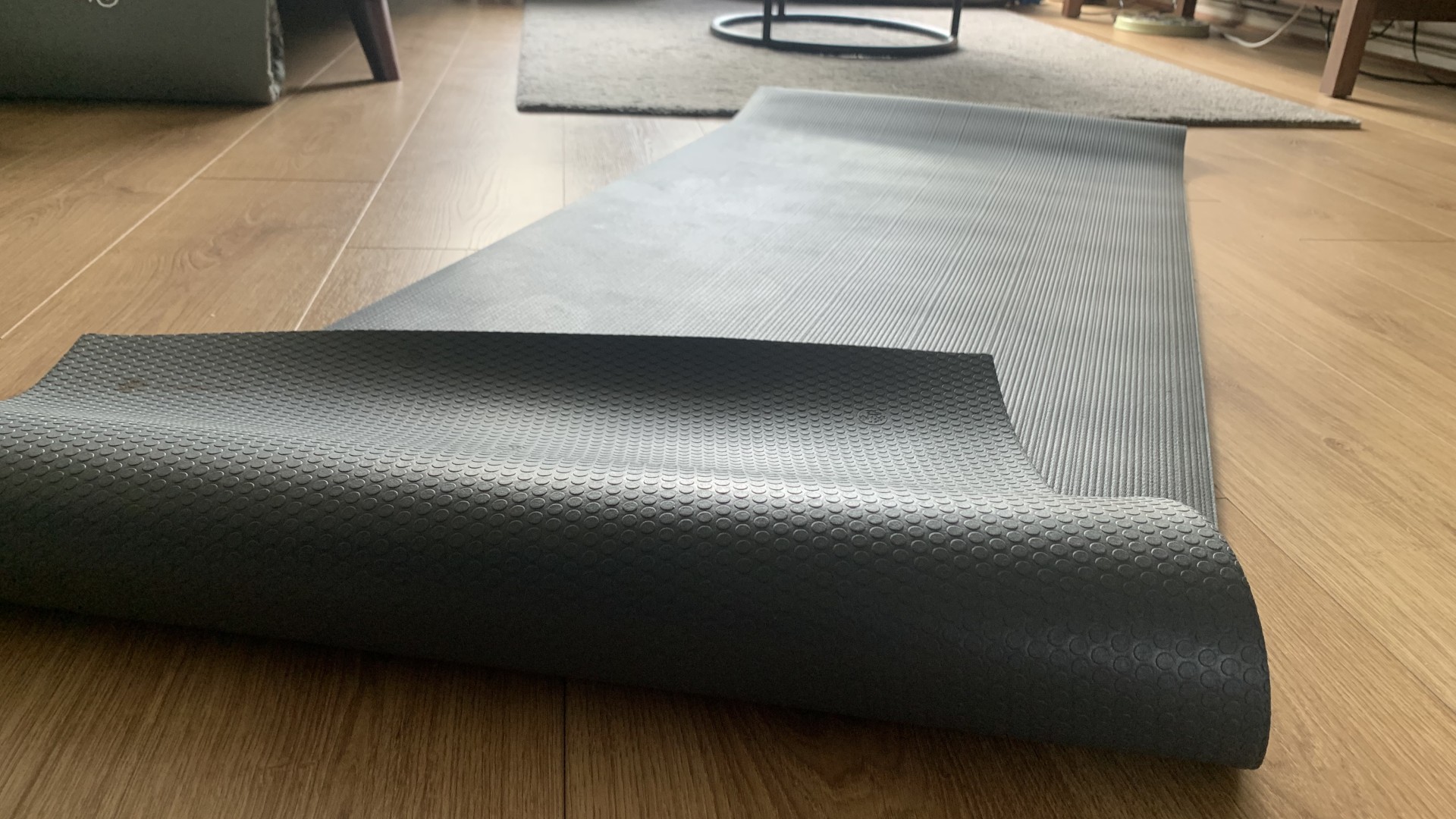
User reviews
The Manduka PROlite yoga mat pulls in 4.33 out of 5 stars on their website and a more impressive 4.7 on Amazon. Users compliment how well-made it is and like how it stays in place during practice. One user said ‘it’s lightweight and stays firm on the floor during yoga class…the thickness is just right, allowing cushioning when doing poses on knees.’ Another loved the balance between thickness and weight and how much stability it offers.
Negative feedback reported how slippery the mat was, with one user reporting theirs didn’t improve over time despite breaking in using sea salt.
Should you buy?
If you’re looking for a larger or lightweight yoga mat from a reliable and popular brand, then the Manduka PROlite is a staple you can count on. It sits in the mid-range price market, and more affordable options exist, but you are partly paying for a brand many yoga teachers depend on — and the materials will last. If you’re looking for unparalleled grip, other yoga mats could serve you better.
Alternatives
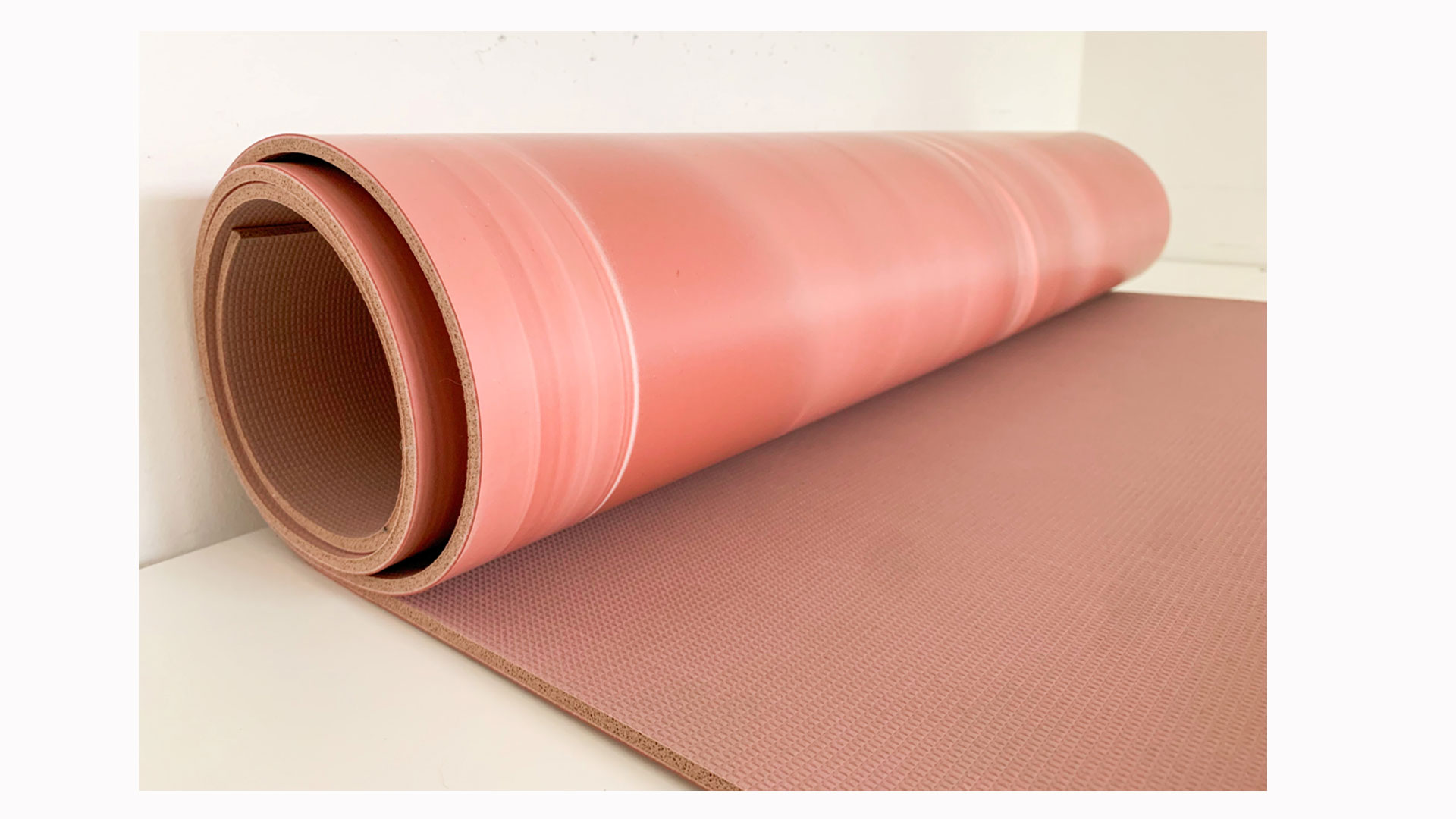
We loved the Lululemon Take Form yoga mat(pictured above). It has an innovative built-in 3D pattern design to help improve posture and positioning. It’s expensive, but it provides ample cushioning, high-quality materials, and stability — perfect for all practices.
Like to travel? The Primasole Folding Yoga Travel Pilates mat is affordable, lightweight, and compact. If you prefer to take your yoga on the road, it will slip neatly into your suitcase — and travel plans.

Sam Hopes is a level III fitness trainer, level II reiki practitioner, and resident fitness writer at Future PLC. Having trained to work with both the mind and body, Sam is a big advocate of using mindfulness techniques in sport and aims to bring mental wellbeing to the forefront of fitness. She’s also passionate about the fundamentals of training and how we can build more sustainable training methods. You’ll find her writing about the importance of habit-building, nutrition, sleep, recovery, and workouts.
